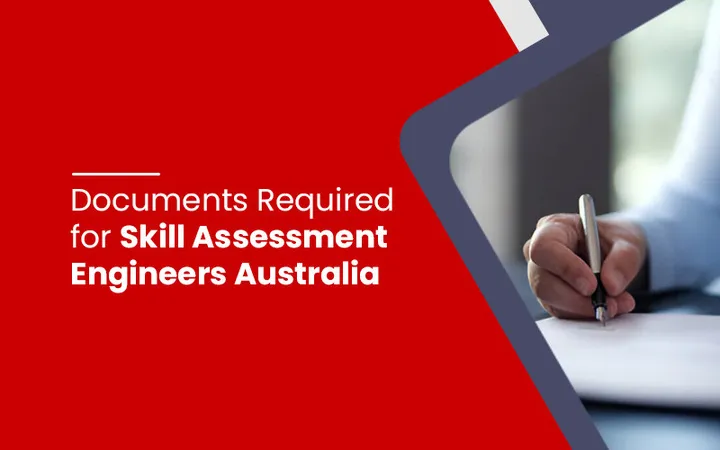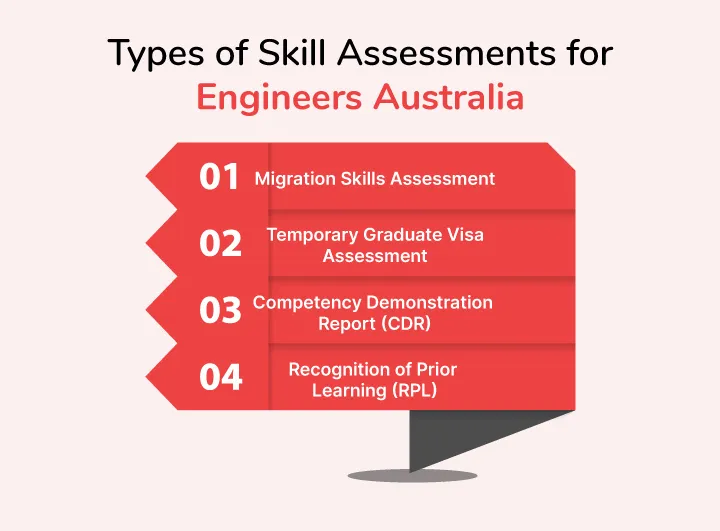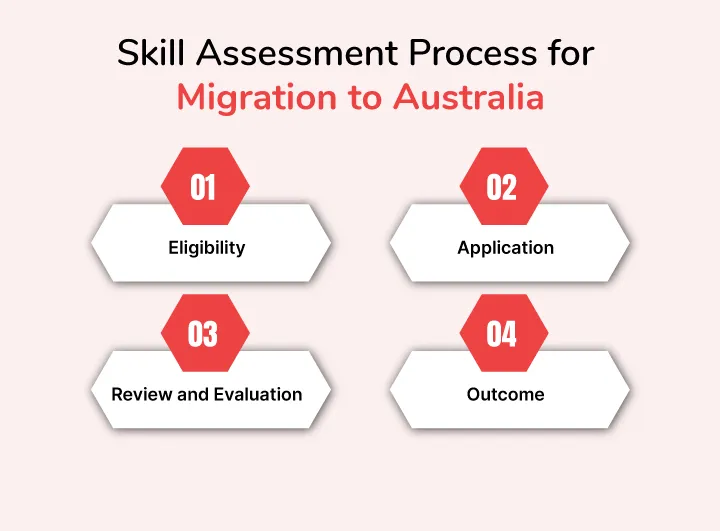Documents Required for Skill Assessment Engineers Australia

Documents Required for Skill Assessment Engineers Australia
Are you curious about the Engineers Australia Skill Assessment prerequisites but still want to take them? The purpose of the Engineers Australia Skill Assessment is to evaluate the professional competencies, work experience, and qualifications of those who want to immigrate to Australia or advance in the engineering industry.
This blog layout covers all the essential aspects of the Engineers Australia Skill Assessment and ensures that readers understand each step of the application process. Let me know if you’d like further details on any specific sections!
What is Skill Assessment Engineers Australia?
Skill Assessment by Engineers Australia is a process through which individuals with engineering qualifications or experience can have their skills and qualifications assessed to meet the requirements for migration to Australia or to gain recognition for professional engineering practice in the country.
Engineers Australia is the professional body for engineers in Australia and is the designated assessing authority for skilled migration visas in the engineering profession.
What can be the purpose of skill assessment by Engineers Australia?
1. Migration
One of the main reasons for skill assessment is for skilled migration to Australia. Individuals who wish to apply for skilled migration visas (such as the skilled independent visa or the skilled nominated visa) must undergo a skills assessment by Engineers Australia to ensure their qualifications and experience meet Australian standards.
2. Professional Recognition
Engineers Australia also provides professional recognition for engineers working in Australia, allowing them to gain membership and be officially recognised in their field.
Types of Skill Assessments for Engineers Australia

1. Migration Skills Assessment
For engineers wishing to enter Australia on a skilled migration visa. This assessment determines if an applicant’s qualifications, work experience, and skills are comparable to Australian standards.
2. Temporary Graduate Visa Assessment
For engineers who have completed an Australian engineering qualification and want to apply for a Temporary Graduate (subclass 485) visa to work in Australia temporarily.
3. Competency Demonstration Report (CDR)
If an applicant’s engineering qualification is not directly accredited by Engineers Australia, for instance, in countries outside the Washington Accord, they may need to provide a CDR.
This includes a detailed report demonstrating the applicant’s engineering knowledge and skills through examples of projects and tasks they have worked on.
4. Recognition of Prior Learning (RPL)
For engineers who do not have a formal engineering degree but have substantial work experience, the RPL process evaluates their practical skills and knowledge to determine if they meet the standards of an Australian-qualified engineer.
Skill Assessment Process for Migration to Australia

1. Eligibility
Before applying for an assessment, applicants must ensure they meet the eligibility criteria, which include having a relevant engineering degree and, in some cases, relevant work experience.
2. Application
Engineers apply online, submitting their qualifications, work experience, English proficiency test results (if required), and other supporting documentation.
3. Review and Evaluation
Engineers Australia evaluates the submitted documents. This can include assessing the applicant’s educational qualifications to determine if they align with Australian standards, as well as evaluating work experience.
4. Outcome
Once the assessment is complete, Engineers Australia provides an outcome:
- Positive Assessment: The applicant’s qualifications and experience meet the necessary criteria for migration or professional recognition.
- Negative Assessment: The applicant’s qualifications or experience do not meet Australian standards. In this case, the applicant may be required to undertake additional study or gain more work experience to meet the standards.
Documents Required for Skill Assessment Engineers Australia

For a Skill Assessment by Engineers Australia, the required documents vary based on your qualifications, experience, and the type of assessment pathway you’re applying for.
Below is a comprehensive list of documents typically required for the skill assessment process.
1. Personal Identification Documents
Passport or National ID Card (for identification purposes).
Passport-sized photographs (if required, as per the application guidelines).
2. Educational Qualifications
a. Degree Certificates
Certified copies of your engineering degree(s) or qualifications
If your degree is from a non-Australian institution, you may need to provide a Statement of Comparability or proof of accreditation by a recognised body (such as the Washington Accord).
b. Academic Transcripts
Official transcripts show the subjects you have completed, the grades received, and the duration of the program. These should be certified or translated into English if they are in another language.
c. Diplomas/Certificates (if applying as an Engineering Associate or Engineering Technologist)
If you hold a diploma or associate degree, provide the relevant certificates.
3. Work Experience
a. Work Reference Letters
Letters from your employers that outline your job title, roles, responsibilities, and the duration of your employment.
The employer or HR representative must sign the letter, which must be on official business letterhead.
It should describe your engineering tasks and demonstrate how they relate to the competencies required for the skill assessment.
If possible, reference specific projects you worked on and your role in them.
b. Detailed Job Descriptions
Additional documentation outlining your job responsibilities and specific engineering tasks.
4. CDR Report Documents
If you are applying through the Competency Demonstration Report (CDR) pathway (typically for those with non-accredited degrees), you will need to submit the following:
a. Career Episodes
Three written reports describing specific engineering projects you have worked on, demonstrating your technical knowledge and skills.
Each career episode should:
Be a minimum of 1,000 words.
Describe your role in the project, the engineering problems you faced, and how you solved them.
Include your engineering methodology and outcomes.
b. Summary Statement
A document that maps the competencies demonstrated in your career episodes to the competency standards outlined by Engineers Australia.
c. Continuing Professional Development (CPD)
CPD is a record of your ongoing learning and development activities to show you have kept your skills up-to-date.
5. English Language Proficiency
English Test Results
If required (based on your country of origin or previous education), you need to submit proof of your English language proficiency through a recognised test. Acceptable tests include:
IELTS (International English Language Testing System).
TOEFL (Test of English as a Foreign Language).
PTE Academic (Pearson Test of English).
Typically, Engineers Australia requires a minimum IELTS score of 6.0 overall (with no band lower than 5.0), but higher scores may be necessary depending on the specific migration or job requirements.
6. Professional Membership (if applicable)
If you are a member of any professional engineering bodies or associations (either in your home country or internationally), you should provide documentation to support this. This may include:
Membership certificates or evidence of registration with other engineering organisations.
7. Additional Documents
Resume/Curriculum Vitae (CV)
A detailed CV outlining your engineering qualifications, work experience, and any relevant skills or certifications.
Proof of Name Change (if applicable)
If your name has changed due to marriage or other reasons, provide documentation such as a marriage certificate or legal name change certificate.
Visa or Immigration Documents
If you are already in Australia, you may need to submit documents such as your visa details or immigration status.
8. Payment of Assessment Fees
Proof of Payment
A receipt or proof that the required assessment fees have been paid. These fees vary depending on the type of assessment and the pathway chosen.
9. Certified Documents
Certified Copies
All documents submitted must be certified copies.
Certification can be done by a qualified person such as a notary public, justice of the peace, or an authorised officer at an Australian embassy or consulate.
EA Skill Assessment Fee
The Engineers Australia (EA) Skill Assessment Fee is the fee charged for assessing an individual’s qualifications and professional experience for migration, employment, or professional recognition purposes in Australia.
The fee depends on the type of assessment and the applicant’s specific circumstances.
As of now, the fees for the EA Skill Assessment can vary based on the pathway, such as:
- Professional Engineer Assessment:
For those applying with a higher-level engineering degree.
- Engineering Technologist Assessment:
For applicants with a more technical qualification.
- Engineering Associate Assessment:
For those applying with a diploma or advanced diploma.
Typically, the fees can range from AUD 300 to AUD 1,000 or more, depending on the assessment type.
It is essential to verify the exact fee on the Engineers Australia website or through their official portal, as the fee may change periodically.
Know more: Skill Assessment outcome letter from Engineers Australia. 🥳😋😻
Conclusion
The Engineers Australia skill assessment is a comprehensive process that ensures that engineers wishing to migrate to Australia or gain professional recognition meet the high standards required by the Australian engineering profession.
The assessment involves the verification of qualifications, work experience, English proficiency, and competency demonstration.
It is a crucial step for engineers aspiring to live and work in Australia, and the process provides the necessary documentation for immigration, professional recognition, and career opportunities in the country.
Given its importance, it is essential that applicants carefully follow the requirements and prepare all necessary documentation to ensure a smooth and successful assessment.
It ensures that the candidate’s credentials, professional background, and skills meet Australian engineering standards, whether for immigration, professional recognition, or both.
FAQs
1. How long does it take for skill assessment engineers in Australia?
Skill assessment by Engineers Australia usually takes 6 to 12 weeks, depending on the assessment type, application completeness, and any additional documentation or information required.
2. Do I need IELTS for Skill Assessment Engineers Australia?
Yes, you usually need to provide proof of English language proficiency for a skill assessment by Engineers Australia.
3. Can I renew my competency assessment for engineers in Australia?
You can reapply or renew your Engineers Australia competency evaluation, but it’s crucial to understand the procedure and context.
4. Can I get PR in Australia without a skill assessment?
For PR in Australia, a skills evaluation is generally necessary. Employer-sponsored visas like the Global Talent Visa, for example, might not need one.
5. How long is the Engineers Australia assessment valid for?
The Engineers Australia skill assessment is often valid for three years. After this period, you may need to reapply or update your assessment if necessary.

